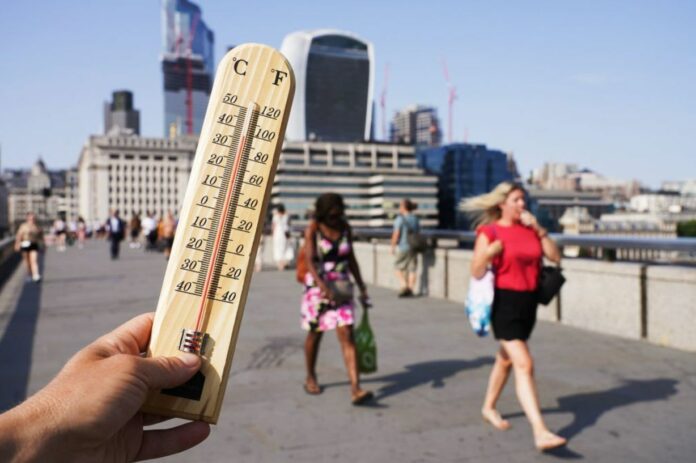Even if we begin to reduce emissions, by 2100 it will be difficult to work outside in many regions near the equator for more than half the year.
Recent heat waves have broken records from Delhi to the Pacific Northwest, and more of these deadly events are expected. Depending on future greenhouse gas emissions, new research from Harvard University and the University of Washington provides a range of heat implications on the planet by the end of this century.
The findings appeared in the open-access journal Communications Earth & Environment today.
According to senior author Lucas Vargas Zeppetello, a doctorate student at the University of Washington who is now a postdoctoral researcher at Harvard, “the record-breaking heat events of recent summers will become much more common in places like North America and Europe.”
Even if we begin to reduce emissions, according to the author, by 2100 it will be difficult to work outside in many regions near the equator for more than half the year.
He continued, “Our study shows a broad range of possible scenarios for 2100.
“This shows that the emissions choices we make now still matter for creating a habitable future.”
The study looks at the “heat index,” which is a combination of the temperature and humidity of the air and how it affects the body. According to the National Weather Service, a temperature of 103 F (39.4 C) or more constitutes a “dangerous” heat index. At 124 F (51 C), the heat index is “extremely dangerous” for humans.
“These standards,” added Vargas Zeppetello, “were first created for people working indoors in places like boiler rooms — they were not thought of as conditions that would happen in outdoor, ambient environments. But we are seeing them now.”
Even if countries meet the goal of the Paris Agreement and keep warming to 2 C, crossing the “dangerous” threshold will happen three to ten times more often in the U.S., Western Europe, China, and Japan by 2100. In the same scenario, the number of risky days in the tropics might treble by 2100, making up half of the year.
In the worst-case scenario, when emissions are not reduced until 2100, nations closer to the equator, including India and sub-Saharan Africa, could experience “extremely dangerous” situations, in which people should not be outdoors for any length of time.
Vargas Zeppetello stated that it is “extremely frightening to think what would happen if 30 to 40 days a year were exceeding the extremely dangerous threshold.” These are terrifying possibilities that we still have the power to avert. This study demonstrates the danger, but it also demonstrates that we have some control to avert these outcomes.
The study uses a method based on probabilities to figure out the range of possible future conditions. Instead of using the four future emission scenarios in the Intergovernmental Panel on Climate Change reports, the authors use a statistical method that combines historical data with population projections, economic growth, and carbon intensity (the amount of carbon emitted for each dollar of economic activity) to predict the likely range of future CO2 concentrations.
The statistical approach, according to co-author Adrian Raftery, a UW professor of statistics and sociology with an adjunct appointment in atmospheric sciences, “gives plausible ranges for carbon emissions and future temperature and has been estimated statistically from and validated against historical data.”
The authors took the higher levels of carbon dioxide and turned them into a range of global temperature increases. They then looked at how that would change the way the weather changes every month around the world.
According to co-author David Battisti, an atmospheric sciences professor at the UW, “the number of days with dangerous levels of heat in the mid-latitudes — including the southeastern and central U.S. — will more than double by 2050.” By 2100, a large portion of the tropics will experience “dangerous” levels of heat stress for about half the year, even according to the extremely low-end estimates of carbon emissions and climatic response.
The results show how important it is to both cut down on future greenhouse gas emissions and protect people from dangerous heat, especially outdoor workers.
Image Credit: Getty
You were reading: New Analysis Warns: ‘Extremely Dangerous’ Hot Days To Become More Common By 2100
